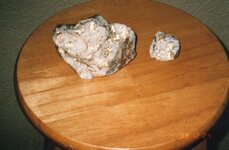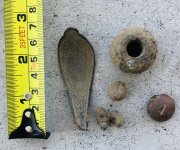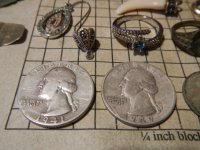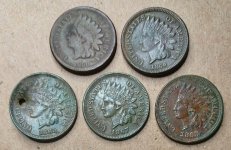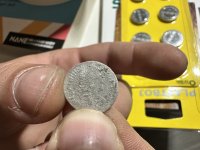audigger53
Hero Member
There have been so many storys about Waltz and his "Mine", that it is hard to find the facts of the LDM, at least IMO.
Fact he went to the Queen Creek Trading Post for supplies when he had Wiesner as his partner.
Fact he Homesteaded his house just outside of then Phoenix by the Salt River.
Fact he was buried in a Pauper's Grave after he died.
Fact the people that should have had him buried with a marker from the "Gold under his bed", did not.
Fact people that tried to follow him when he went out to his "Mine", either lost his tracts or never came back to Phoenix.
So where is the evidence that he had a really rich mine?
Some of his "Stories" said it was a vein 8 inches wide and a foot or more across.
Was any of his gold under the bed solid gold? To confirm his tale of how rich the mine was?
The Matchbox is pretty but it does not give evidence of a vein that wide, again IMO.
Forget the books about him and his mine, look for facts after he found his mine.
Newspaper articles from back then, assay reports, him buying supplies with gold anything that would show that he had really found a high paying mine. These are what I would believe as facts about his mine.
OK waiting for answers from the people that have done real research on Jacob Waltz. Books don't count unless they included facts that can be proved.
Let the fun begin.
Fact he went to the Queen Creek Trading Post for supplies when he had Wiesner as his partner.
Fact he Homesteaded his house just outside of then Phoenix by the Salt River.
Fact he was buried in a Pauper's Grave after he died.
Fact the people that should have had him buried with a marker from the "Gold under his bed", did not.
Fact people that tried to follow him when he went out to his "Mine", either lost his tracts or never came back to Phoenix.
So where is the evidence that he had a really rich mine?
Some of his "Stories" said it was a vein 8 inches wide and a foot or more across.
Was any of his gold under the bed solid gold? To confirm his tale of how rich the mine was?
The Matchbox is pretty but it does not give evidence of a vein that wide, again IMO.
Forget the books about him and his mine, look for facts after he found his mine.
Newspaper articles from back then, assay reports, him buying supplies with gold anything that would show that he had really found a high paying mine. These are what I would believe as facts about his mine.
OK waiting for answers from the people that have done real research on Jacob Waltz. Books don't count unless they included facts that can be proved.
Let the fun begin.


